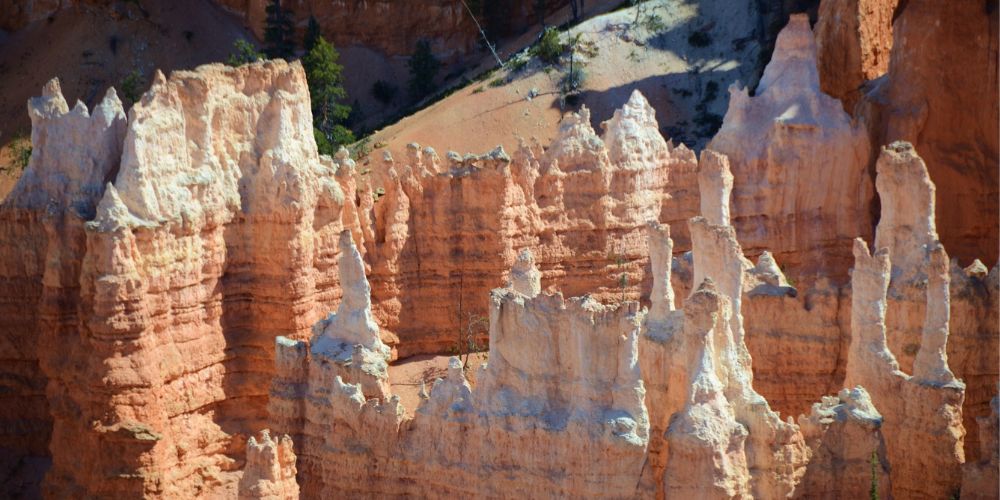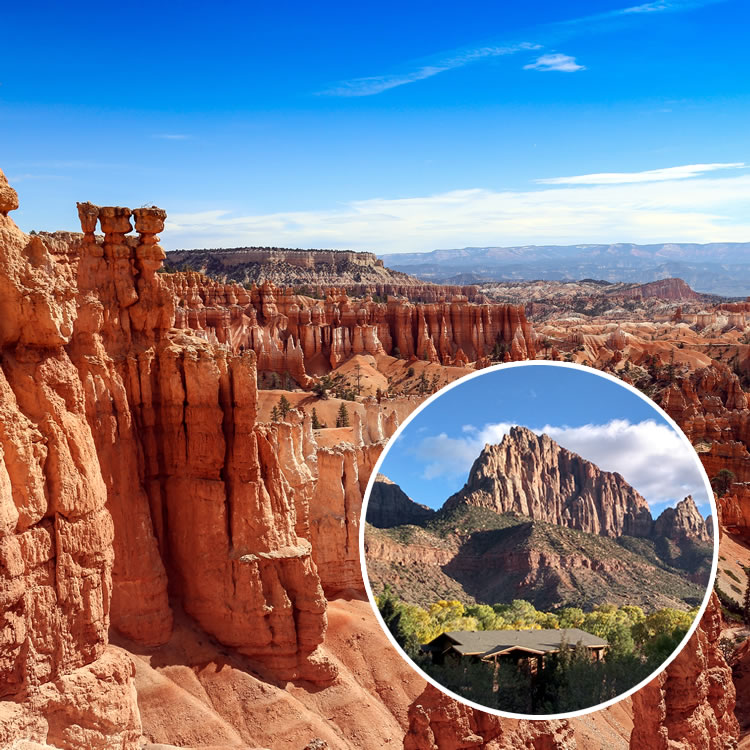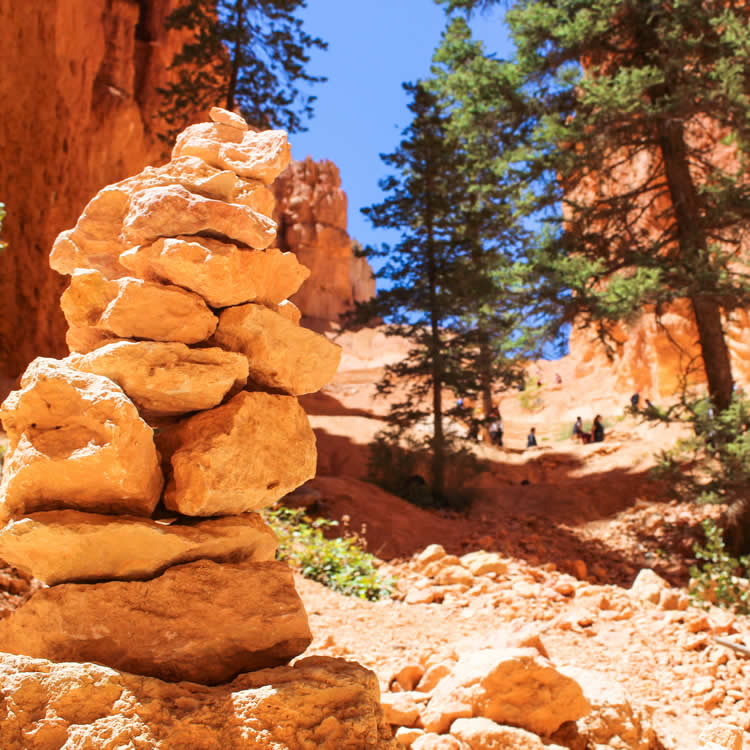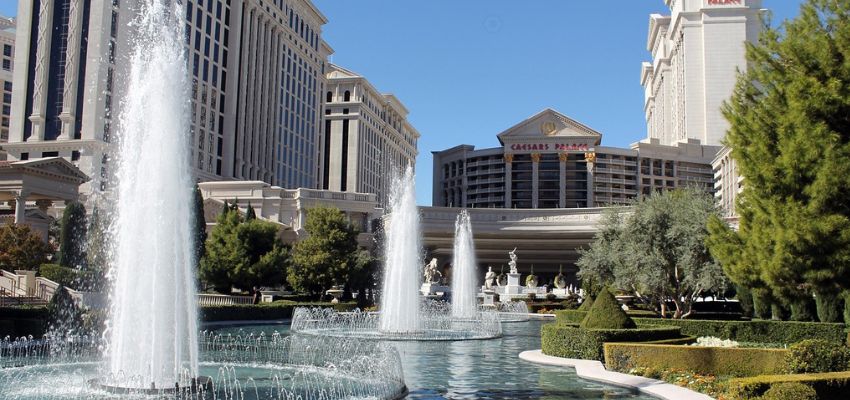How Was Bryce Canyon Formed + 6 Other Questions We Know You Have About Bryce Canyon National Park

Beautiful Bryce Canyon National Park is best known for its incredible natural arches and iconic hoodoo rock formations. It also boasts awe-inspiring night skies and was officially recognized by the International Dark Sky Association as a Dark Sky park in 2019. These landscapes and skies, in combination with a wide variety of activities like hiking and horseback riding, bring in over 2 million visitors to Bryce Canyon National Park each year.
Whether Bryce Canyon is on your bucket list or you’re looking for the perfect single-day excursion from Las Vegas, you likely have some key questions about Bryce Canyon that need answering before you visit. In this post, we’ll answer some of the most common questions people have about Bryce Canyon, including:
- Where is Bryce Canyon located?
- How big is Bryce Canyon?
- Why is Bryce Canyon not really a canyon?
- How was Bryce Canyon formed?
- What is a hoodoo?
- Why is it called Bryce Canyon?
- When is the best time of year to visit Bryce Canyon?
Let’s dig in:
Where is Bryce Canyon Located?
Bryce Canyon is located in southwestern Utah, approximately 4.5 hours driving distance from Las Vegas, Nevada. The National Park is on Utah State Highway 63, about 30 minutes away from the nearby towns of Cannonville or Panguitch.
ROAD TRIP TIP: If you’re considering including a visit to Bryce Canyon in a larger road trip itinerary that stops at other National Parks, Zion National Park is about another 90 minutes from Bryce Canyon, the North Rim of the Grand Canyon is approximately 3 hours from Bryce Canyon, and the South Rim is approximately 5 hours away.
Interested in hitting all three of these national parks? Check out our Grand Canyon to Bryce Canyon and Zion National Park Road Trip Itinerary.
How Big is Bryce Canyon?
Bryce Canyon spans 35,835 acres or 55.99 square miles, placing it at #51 in terms of size on the list of National Parks in the USA. For comparison, Grand Canyon National Park—the 11th largest national park in the country—is 1,218,375 acres and 1,905 square miles. Keep in mind that this number comprises only the portion of the Grand Canyon that is owned and operated by the National Park Service (the North and South rims) and does not include Grand Canyon West or the other areas outside of the park boundary.
How was Bryce Canyon Formed?
Bryce Canyon is part of the Paunsaugunt Plateau. It was formed from this Plateau by weather-related forces like wind and rain, rather than a river. The National Park Service outlines three stages that resulted in the formation of Bryce Canyon and its distinctive hoodoos:
- Stage 1: Initial rock deposits—Around 50 million years ago, a lake and floodplain system brought together sediment and particles, cementing them into Bryce Canyon’s rock layers, which include limestones, dolostones, mudstones, siltstones, and sandstones.
- Stage 2: Shifting plate tectonics—Over millions of years, different plate tectonic interactions moved Bryce Canyon to an elevation where it could receive temperatures both above and below freezing in one night “over 170 nights out of the year” (NPS).
- Stage 3: Weather and erosion—Those 170+ nights of freezing and above-freezing temperatures are key to the next phase—weathering and erosion. The National Park Service offers a great explanation for how these two processes create the hoodoos:
“When water (from either rain or snow that has melted) seeps its way into the cracks in the rock, it resides there. Hours later, when Bryce Canyon is met with freezing temperatures, the water trapped inside the rock begins to freeze into ice. When water freezes into ice, it expands by 9%! This expansion into ice causes tremendous pressure on the surrounding rock, and thus causes it to break apart. This process is known as “ice wedging”, because the ice is literally wedging apart the rocks. From a plateau, eventually the rocks break down into walls, windows, and then as individual hoodoos.”
Why is Bryce Canyon Not Really a Canyon?
It may look like a canyon, but Bryce Canyon is technically not a canyon due to how it was formed.
A canyon is formed by flowing water—like the Grand Canyon, for example, which was formed by the Colorado River over millions of years. Bryce Canyon, on the other hand, was carved out not by a river, but instead by weather like wind and rain.
So, if Bryce Canyon isn’t a canyon, what is it? Technically, Bryce Canyon is “a spectacular series of more than a dozen amphitheaters, each of which is carved at least 1,000 feet into the chromatic limestone of the Paunsaugunt Plateau.” (NPS)
What is an amphitheater?
According to the Encyclopedia of Physical Science and Technology (Third Edition), an amphitheater is a “bowl-shaped hollow in a mountain side, characterized by steep backwalls, possessing an arcuate plan form and a glacially overdeepened basin often occupied by a lake and enclosed on the downslope, open end by a smooth bedrock rim or threshold.”
Similar to human-made amipheathers, naturally occurring amphitheaters amplify sound, making them an ideal place to hold theatrical performances and concerts, like the one at Red Rock Amphitheater in Colorado.
Why is it Called Bryce Canyon?
Bryce Canyon was named for Ebenezer Bryce, a skilled carpenter who was sent to the area in the 1870s by the Church of Jesus Christ of Latter-Day Saints to help aid Mormon settlers. Locals took to calling the canyon, which is located near his homestead, “Bryce’s Canyon”, and the name stuck.
What is a Hoodoo?

A hoodoo, also referred to as a tent rock or fairy chimney, is a tall spire or pinnacle rock formation created by weathering and erosion.
What is the Best Time of Year to Visit Bryce Canyon?
The best time of year to visit Bryce Canyon is between May to September because these months offer ideal weather conditions and are perfect for camping and hiking. However, Bryce Canyon is open and accessible year-round, offers fun winter activities (including a winter festival), and looks resplendent covered with snow. So, if you don’t mind the cold or reduced access to hiking trails due to seasonal closures and you prefer a less-crowded experience, consider opting for an autumn or winter trip.
Learn more about visiting Bryce Canyon in winter.
Conclusion
Located in Utah and created via weathering and erosion, Bryce Canyon is one of the USA’s most impressive national parks and possibly its most impressive canyon-that-is-not-a-canyon. It has the most abundant collection of hoodoos in the world and is a designated Dark Sky park, making it a must-see for any visitors to the Southwest area, no matter what time of year you visit.
Interested in seeing the hoodoos for yourself? Visit Bryce Canyon & Zion National Park.



